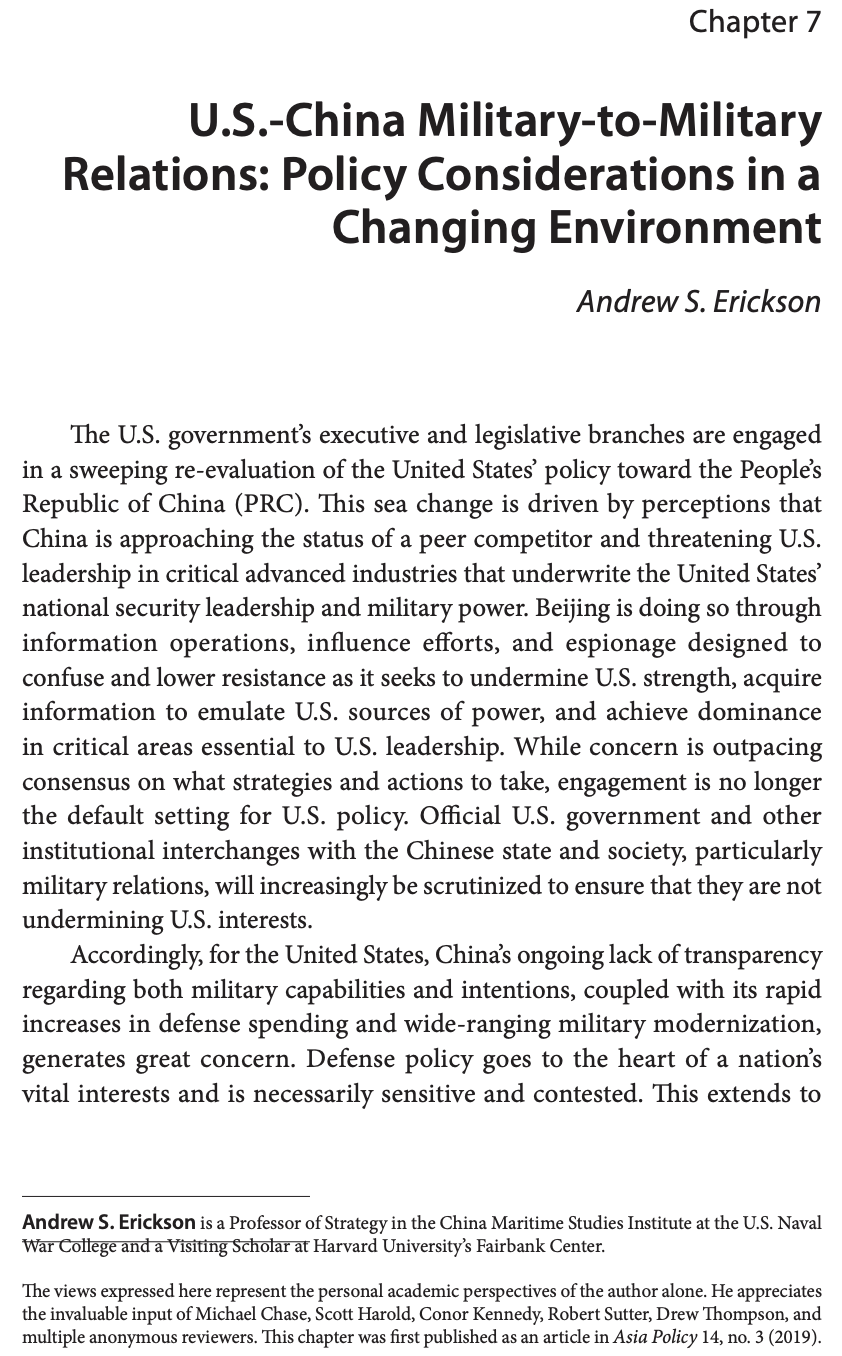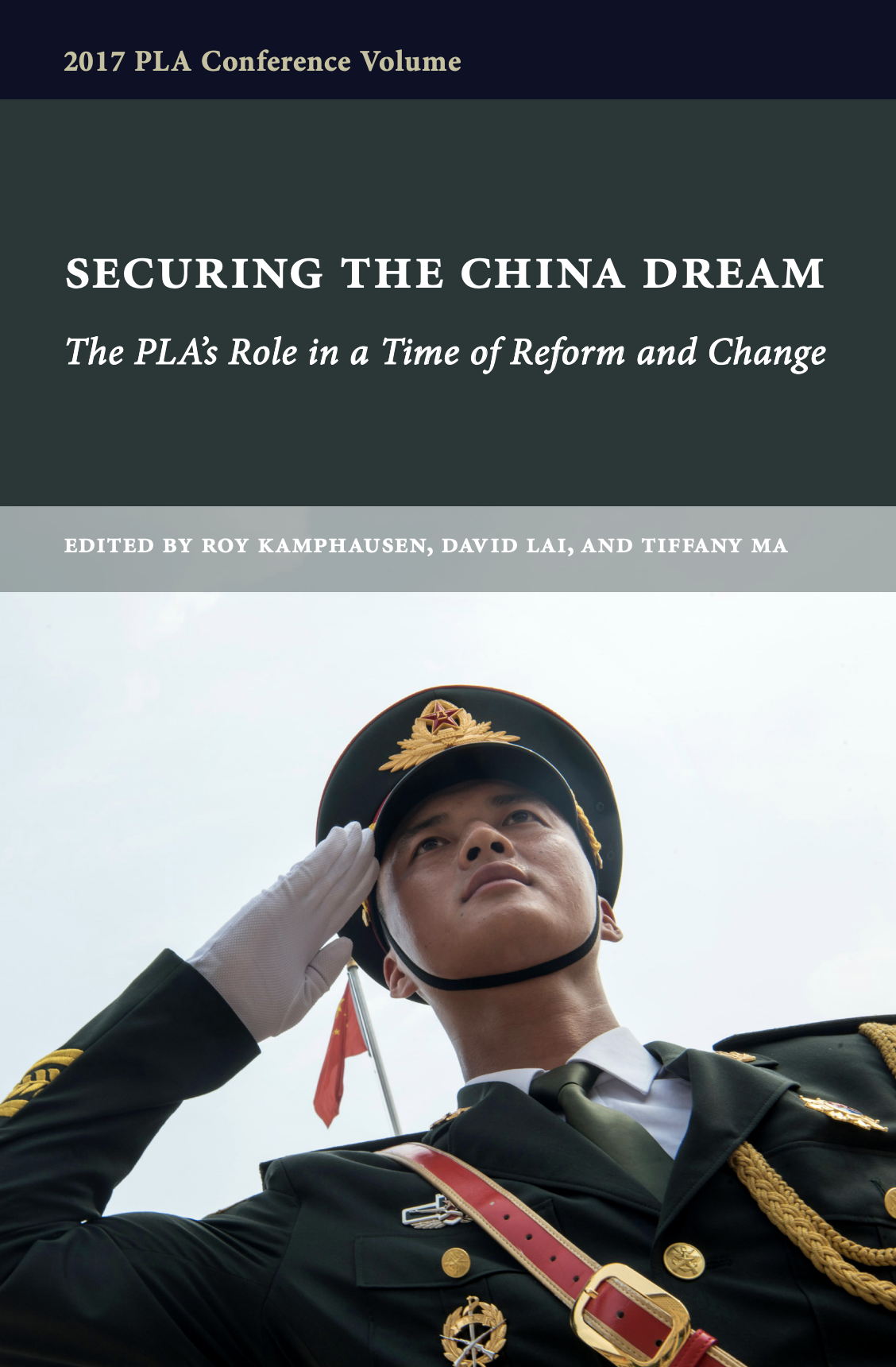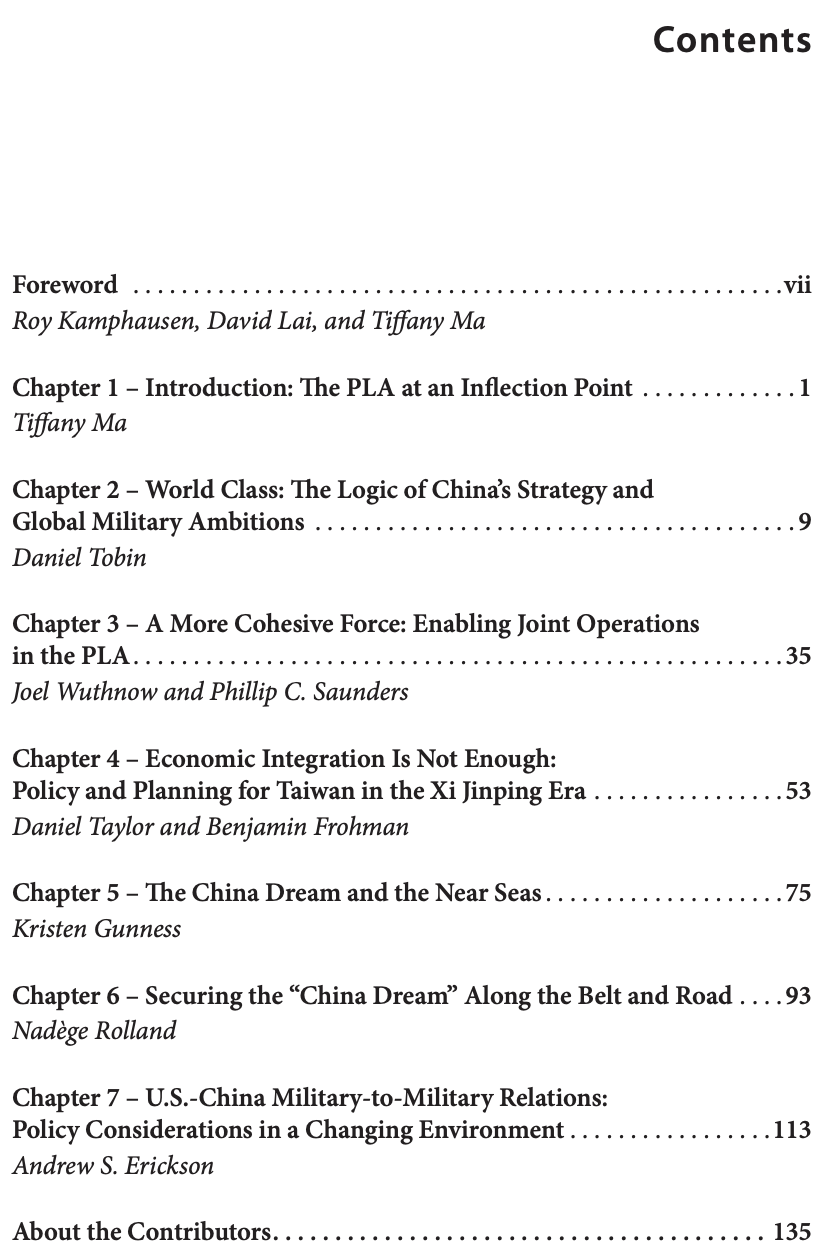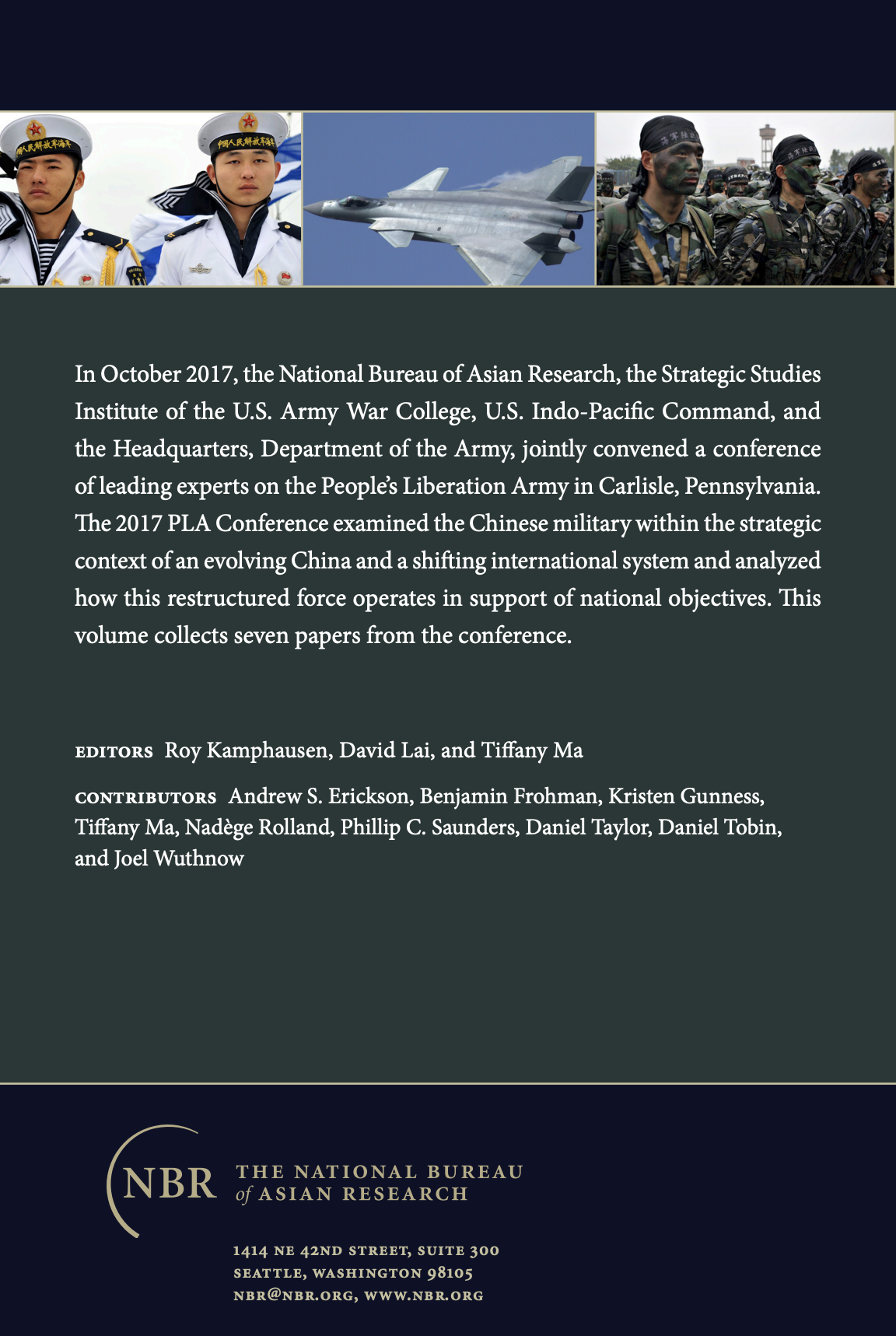U.S.-China Military-to-Military Relations: Policy Considerations in a Changing Environment
Andrew S. Erickson, “U.S.-China Military-to-Military Relations: Policy Considerations in a Changing Environment,” in Roy Kamphausen, David Lai, and Tiffany Ma, eds., Securing the China Dream: The PLA’s Role in a Time of Reform and Change (Seattle, WA: National Bureau of Asian Research, 2020), 113–33.
Click here to download full-text PDF of volume.
The U.S. government’s executive and legislative branches are engaged in a sweeping reevaluation of the United States’ policy toward the People’s Republic of China (PRC). This sea change is driven by perceptions that China is approaching the status of a peer competitor and threatening U.S. leadership in critical advanced industries that underwrite the United States’ national security leadership and military power. Beijing is doing so through information operations, influence efforts, and espionage designed to confuse and lower resistance as it seeks to undermine U.S. strength, acquire information to emulate U.S. sources of power, and achieve dominance in critical areas essential to U.S. leadership. While concern is outpacing consensus on what strategies and actions to take, engagement is no longer the default setting for U.S. policy. Official U.S. government and other institutional interchanges with the Chinese state and society, particularly military relations, will increasingly be scrutinized to ensure that they are not undermining U.S. interests.
Accordingly, for the United States, China’s ongoing lack of transparency regarding both military capabilities and intentions, coupled with its rapid increases in defense spending and wide-ranging military modernization, generates great concern. Defense policy goes to the heart of a nation’s vital interests and is necessarily sensitive and contested. This extends to bilateral and multilateral military relationships. Military relations cannot bolster or independently stabilize Sino-U.S. relations. Typically, they serve as an indicator of the overall relationship’s broader health, one that is able to influence relations only for the worse. Chinese interlocutors frequently refer to military-to-military relations as “the short stave in the barrel” of the overall relationship, but they are mistaken when they imply that the stave can be simply lengthened independently to increase the water level. Military-to-military relations are indeed a limiting factor, but not one that simply may be manipulated to achieve broader progress—at least not without a degree of reciprocity that Beijing is unwilling to provide at present.
Chinese interlocutors also frequently blame the United States for limitations in military engagement. They typically call for Washington to make several major concessions preemptively. This includes taking steps to remove what they view as unacceptable impediments to bilateral military relations by ceasing arms sales to Taiwan and terminating the Taiwan Relations Act (TRA), revising the National Defense Authorization Act (NDAA), and repealing related provisions such as the DeLay amendment.1 Additionally, People’s Liberation Army (PLA) interlocutors, including senior PLA officials, periodically state that U.S. military forces must cease “close in” reconnaissance operations.2 They charge that the NDAA—and increasingly other policy documents from the Trump administration—has communicated that the United States sees China as an adversary, and that defining the relationship in this way makes it difficult for China to become more transparent and participate in some areas of cooperation.
These preconditions are all nonstarters in the mainstream U.S. policy community—and rightly so. Moreover, Beijing does not appear to be open to making any substantial concessions of its own. China’s approach vis-à-vis critical issues that the United States views as vital to its security interests and military operations is therefore not currently compatible with a substantial upgrading of bilateral military relations and engagement.
This chapter argues that the NDAA remains a necessary oversight and safeguard mechanism for U.S. policy regarding military-to-military relations with China. It is divided into the following sections: The first section examines the NDAA, what it does and does not limit, and the rationale for maintaining it as a feature of U.S. policy. The second section addresses principles for the United States to better improve its own processes with respect to engaging China. The third section suggests five principal areas that offer meaningful opportunities for Sino-U.S. military exchanges and cooperation. The fourth section concludes by considering options for managing expectations and military relations with China in the Xi Jinping era. … … …
Securing the China Dream: The PLA’s Role in a Time of Reform and Change
Edited by Roy Kamphausen, David Lai, and Tiffany Ma
With contributions from Andrew S. Erickson, Benjamin Frohman, Kristen Gunness, Tiffany Ma, Nadège Rolland, Phillip C. Saunders, Daniel Taylor, Daniel Tobin, and Joel Wuthnow
The chapters in this volume were originally presented as papers at the 2017 People’s Liberation Army (PLA) Conference convened by the National Bureau of Asian Research, the Strategic Studies Institute of the U.S. Army War College, U.S. Indo-Pacific Command, and the Department of the Army. Organized around the theme “Securing the China Dream: The PLA’s Role in a Time of Reform and Change,” the conference focused on the impact of China’s changing political landscape, military restructuring, and modernization on the PLA’s ability to fulfill its strategic objective of fighting and winning informationized local wars.
TABLE OF CONTENTS
Foreword
Roy Kamphausen, David Lai, and Tiffany Ma
Chapter 1
Introduction: The PLA at an Inflection Point
Tiffany Ma
Chapter 2
World Class: The Logic of China’s Strategy and Global Military Ambitions
Daniel Tobin
Chapter 3
A More Cohesive Force: Enabling Joint Operations in the PLA
Joel Wuthnow and Phillip C. Saunders
Chapter 4
Economic Integration Is Not Enough: Policy and Planning for Taiwan in the Xi Jinping Era
Daniel Taylor and Benjamin Frohman
Chapter 5
The China Dream and the Near Seas
Kristen Gunness
Chapter 6
Securing the “China Dream” Along the Belt and Road
Nadège Rolland
Chapter 7
U.S.-China Military-to-Military Relations: Policy Considerations in a Changing Environment
Andrew S. Erickson









































